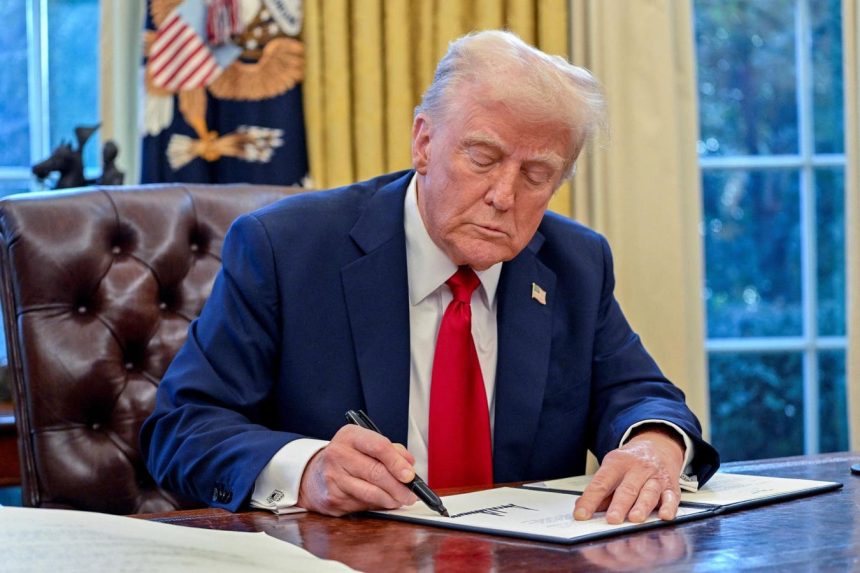Donald Trump’s second-term regulatory reform agenda, encapsulated in his “Unleashing Prosperity Through Deregulation” executive order, signals a dramatic shift away from the expansive regulatory environment fostered by the Biden administration. This new directive mandates a ten-to-one ratio for regulatory replacement – for every new regulation introduced, ten existing ones must be eliminated. Furthermore, the overall cost of new regulations, factoring in the repealed ones, must be significantly less than zero, a determination overseen by the Office of Management and Budget (OMB). This aggressive approach, coupled with a freeze on Biden-era rules and a focus on curbing perceived excesses in diversity, equity, and inclusion (DEI) and environmental initiatives, sets the stage for a substantial reduction in the regulatory burden on businesses and the economy. Trump’s initial regulatory actions, including a significantly reduced output of new rules and pages added to the Federal Register, underscore the administration’s commitment to this streamlined approach.
Trump’s strategy directly counters Biden’s efforts to dismantle the regulatory streamlining apparatus established during Trump’s first term. Biden’s “Modernizing Regulatory Review” executive order raised the threshold for regulatory review, effectively exempting a wider range of regulations from rigorous scrutiny. He also directed the OMB to rewrite Circular A-4, the guidance document for regulatory analysis, in a manner that critics argue inflated the benefits of government intervention. Trump’s “Unleashing Prosperity” explicitly revokes both Biden’s executive order and the revised Circular A-4, reinstating the lower review threshold and signaling a return to a more cost-conscious approach to regulation. This reversal underscores the fundamental philosophical difference between the two administrations regarding the role and scope of government regulation.
Transparency and predictability are further emphasized in Trump’s new order, requiring agencies to align their regulatory activities with the published Unified Agenda of federal regulations. This measure ensures that regulatory actions are pre-announced and subject to public scrutiny, preventing agencies from implementing surprise regulations without prior approval from the OMB director. The repeated referencing of Executive Order 12866, the Clinton-era framework for regulatory planning and review, suggests that the Trump administration intends to build upon existing regulatory frameworks rather than completely dismantling them. This strategic approach indicates a focus on long-term, sustainable regulatory reform, hinting at further revisions and additions to the existing regulatory architecture.
The “Unleashing Prosperity” order sets the stage for more substantial reforms, potentially including structural changes beyond executive orders. The expectation of “additions to the Unified Regulatory Agenda and Regulatory Plan” granted to the OMB director, along with the reinstatement of OMB oversight over tax rules, points towards a more comprehensive approach to regulatory reform. The reintroduction of “Deregulatory” designations for rules, coupled with detailed White House guidance on cost reduction, reinforces the administration’s commitment to minimizing the economic impact of regulation. This approach acknowledges the diminishing returns of simply repealing existing regulations, particularly given the procedural hurdles posed by the Administrative Procedure Act. The current order likely serves as a foundation for more ambitious reforms, potentially including legislative changes to address the structural underpinnings of the administrative state.
The simultaneous focus on spending and regulation, embodied in the Department of Government Efficiency (DOGE) initiative, highlights the interconnectedness of these two policy areas. DOGE aims to reduce government spending by eliminating unnecessary departments, agencies, and programs, thereby tackling both the direct costs of government operations and the indirect costs imposed by regulations emanating from these entities. This approach recognizes that much regulatory burden stems from federal spending programs, loan guarantees, and grants, which often impose conditions on businesses and leverage contracting and procurement procedures to achieve regulatory objectives. DOGE’s mandate challenges the underlying assumption that market failures necessitate government intervention, arguing that the true failures are often political in nature, with agencies hindering rather than facilitating expertise and efficiency.
Several complementary strategies are anticipated to further bolster the deregulatory agenda. The Congressional Review Act (CRA) is expected to be utilized to repeal Biden-era regulations, potentially including guidance documents and portions of existing rules, through ambitious interpretations. Key executive orders rescinded by Biden, such as the 2017 order establishing Regulatory Reform Officers and Task Forces within agencies, are likely to be reinstated and expanded, potentially empowering these bodies to recommend program eliminations. Legislative support will be crucial for long-term success, with potential initiatives including a regulatory cost budget, sunset provisions for regulations, and a version of the REINS Act requiring congressional approval for significant rules. Finally, addressing “regulatory dark matter” – the sub-regulatory guidance documents that often impose significant burdens without undergoing formal rulemaking – will be a key priority. This may involve reinstating Trump-era transparency measures for guidance documents and pursuing legislation to curtail the use of such informal regulatory mechanisms. These multifaceted efforts suggest a determined approach to systematically dismantling the administrative state, though legal challenges and political opposition are likely to be significant hurdles.



